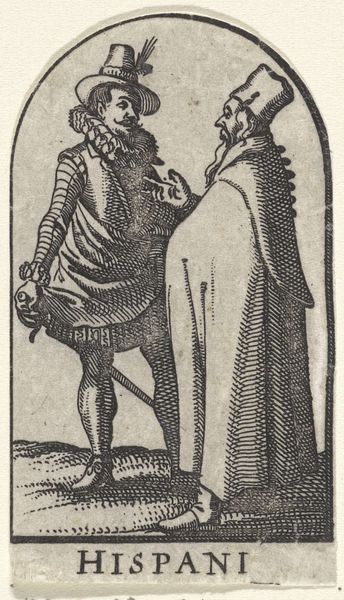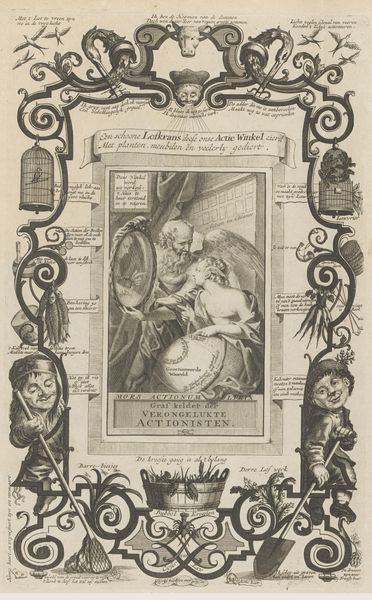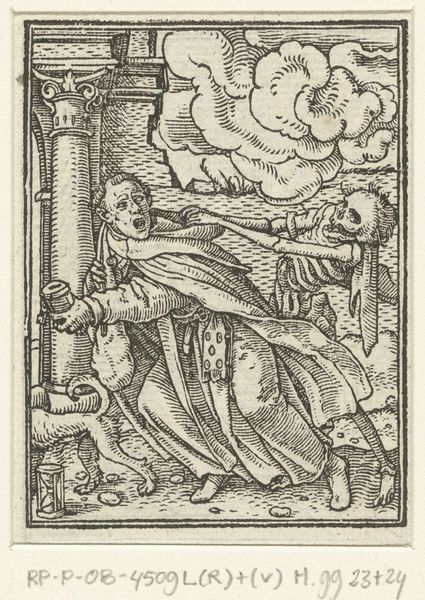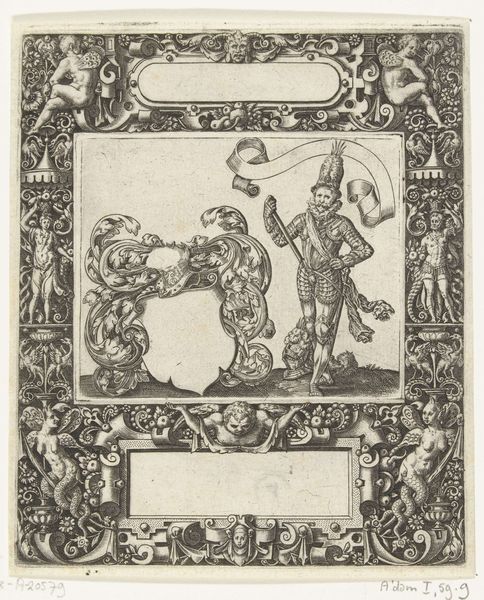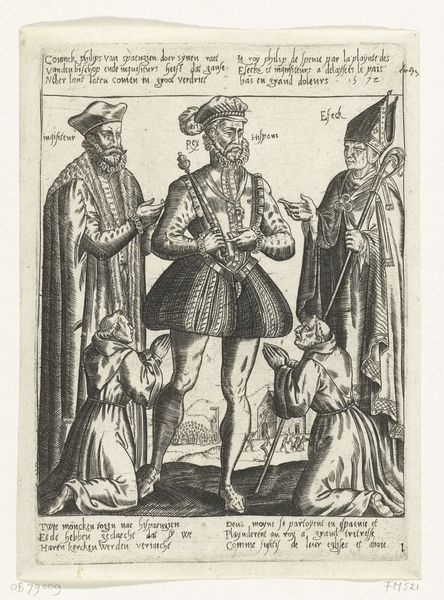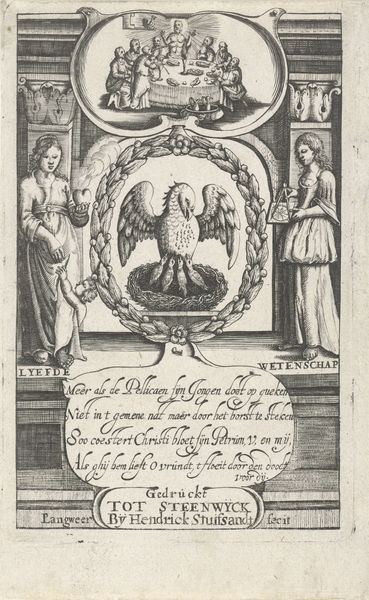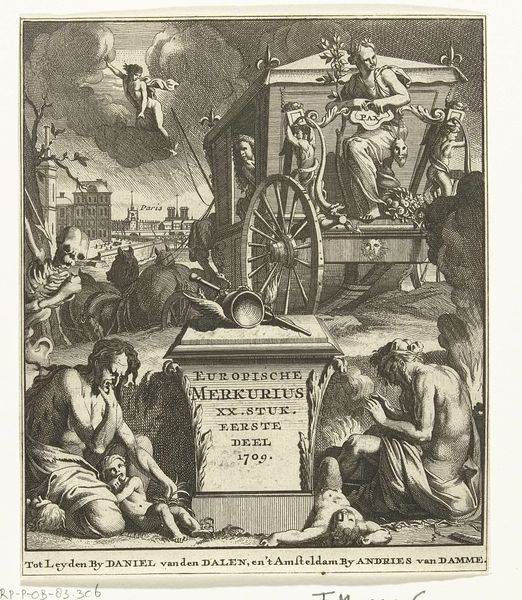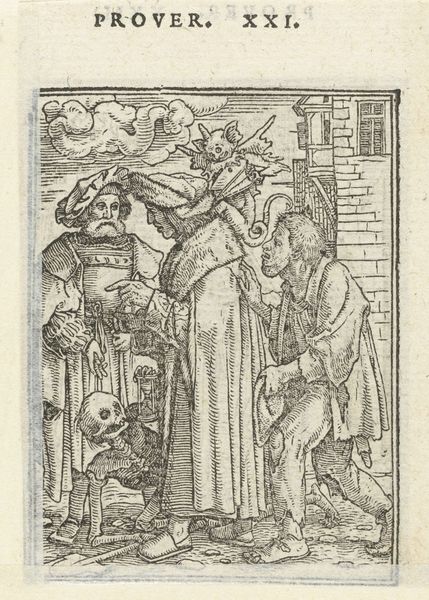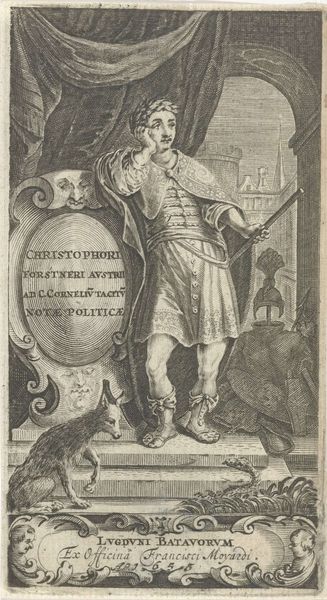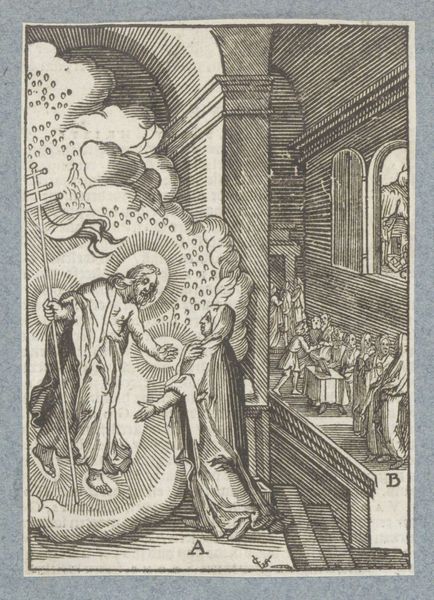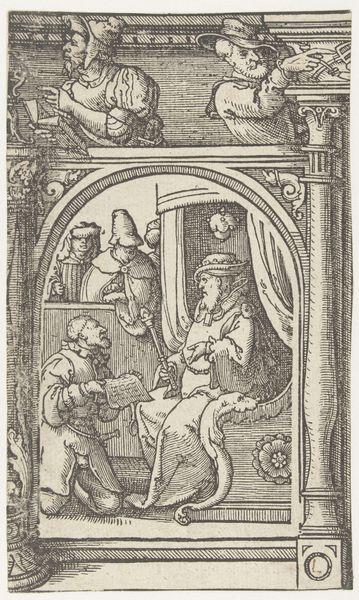
Geneesheer met esculaap, vogels, fantasiedier en hond naast oorspronkelijke bewoner van Amerika met titelcartouche 1642
0:00
0:00
print, etching, engraving
#
portrait
#
allegory
#
baroque
# print
#
etching
#
history-painting
#
engraving
Dimensions: height 111 mm, width 57 mm
Copyright: Rijks Museum: Open Domain
This print, "Geneesheer met esculaap, vogels, fantasiedier en hond naast oorspronkelijke bewoner van Amerika met titelcartouche", was made in 1642 by Cornelis van Dalen I, using engraving—a process involving carving lines into a metal plate, inking it, and pressing it onto paper. The striking contrast achieved by the precise, laborious cutting of these lines shapes the image, from the figure of the physician, complete with his caduceus, to the indigenous American offering a pipe. The print is a fascinating document of its time, an advert for a book by someone named Jac. Bontius. Look closely, and you will notice the hierarchy created by the engraving technique itself; the Western figure appears solid, while the “original inhabitant” is more lightly described. This reflects the unequal power dynamic of the colonial era, where images like these played a role in shaping perceptions of different cultures. It reminds us that printmaking, like all forms of making, can be a powerful tool in the construction of social narratives.
Comments
No comments
Be the first to comment and join the conversation on the ultimate creative platform.

